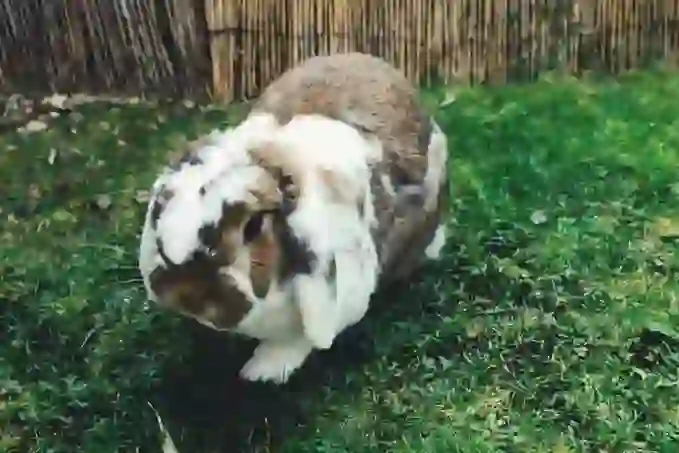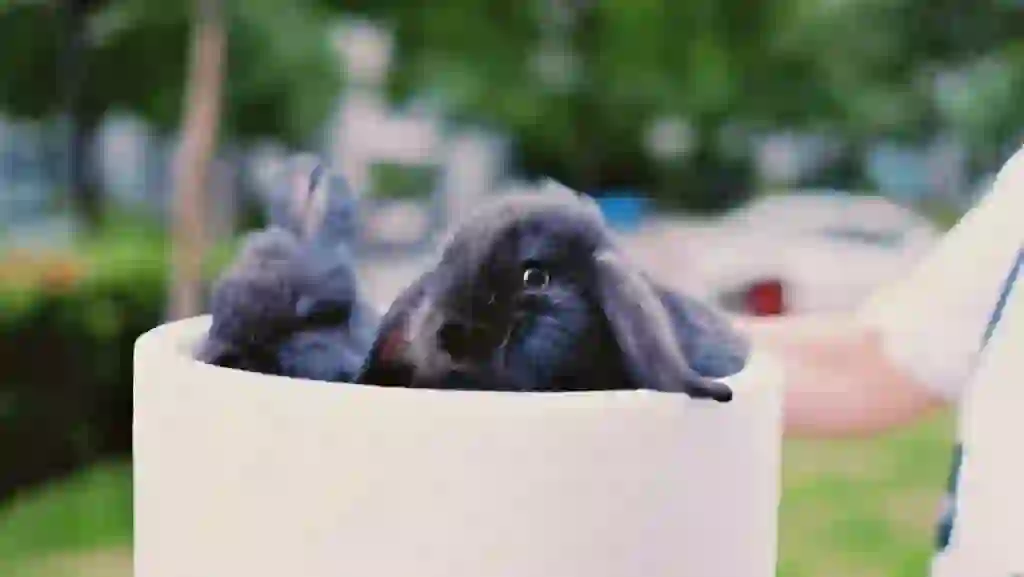
Mini Lop
Mini Lop
Mini Lop
Are you familiar with the Mini Lop, a popular type of lop-eared rabbit? Though it's called 'mini', it is actually larger than the Holland Lop and smaller than the French Lop, creating a curious 'large, medium, small' comparison when they are lined up together. Let's delve deeper into the life and ecology of the mysterious Mini Lop!
Mini Lop Basic Infomation

Country of Origin: Germany
Senior Male: Over 6 months, 1.4kg - 2.7kg, Ideal weight 2.7kg
Senior Female: Over 6 months, 1.4kg - 2.7kg, Ideal weight 2.7kg
Junior Male/Female: Under 6 months, less than 2.72kg, minimum weight 1.36kg according to the American Rabbit Breeders Association (ARBA) standards
The rabbit was first recognized at a rabbit show in Germany in 1972, where an American breeder named Bob fell in love with the original Mini Lop. Known at the time as Kleine Widder, these rabbits were a cross between the German Big Lop and a small chinchilla breed.
At that time, this rabbit was known as Kleine Widder, which was originally developed in Germany and later refined in the USA.
He later used the French Lop and Standard Chinchilla for breeding, but it seems he struggled to achieve the desired size.
In 1974, he introduced this rabbit to the American Rabbit Breeders Association (ARBA) for the first time, but it was not officially registered due to its size not being ideal and the breed name not being quite right at the time.
Bob then renamed the breed to Mini Lop, and shared males and females born from his breeding efforts with other breeder friends.
As various breeders became involved, improvements were made, and when the Mini Lop was resubmitted for registration, it was officially recognized as a breed in 1980.
Mini Lop Q&A

What is the origin of the Mini Lop's name?
The term 'Mini' implies 'small', and 'Lop' refers to the characteristic of having drooping ears. The name was created by combining these terms.

What are the color variations of the Mini Lop?
Mini Lops come in various color patterns:
- Self (one solid color): Black, Blue, Chocolate, Lilac, Blue-eyed White, Ruby-eyed White
- Shaded (darker color on the ears, nose, tail, and feet): Sable, Sable Point, Smoke Pearl, Seal, Tortoise Black, Tortoise Blue, Tortoise Chocolate, Tortoise Lilac, Frosty Black, Frosty Blue, Frosty Chocolate, Frosty Lilac
- Agouti (each hair shaft has multiple colors): Chestnut Agouti, Chocolate Agouti, Chocolate Chinchilla, Chinchilla, Lynx, Opal
- Broken (white base color with spots): Broken, Tri-color
- Pointed White (white body with colored points): Black, Blue, Chocolate, Lilac
- Ticked (different colored hairs interspersed): Steel Black, Steel Blue, Steel Lilac, Steel Chocolate, Steel Sable, Silver Fox Black
- Wide Band (same color on the head and legs, different around the eyes and belly): Cream, Fawn, Orange, Red
Mini Lops have only a short coat variety.

What does a Mini Lop look like?
Mini Lops have a well-developed, robust head with a part called the 'crown' that curves in shape. The body type is described as compact. The ears are rounded at the tips and hang vertically, legs are short and stout, giving them a stocky appearance. Their low head carriage is sometimes likened to that of a Bulldog, contributing to their popularity. The fur is known for its good texture, described as roll-back.

Are there crossbreeds of Mini Lops?
There are no crossbreeds within the officially recognized Mini Lop breed. However, the meaning might vary depending on the shop handling them. Some shops sell purebred Mini Lops, while others might label any lop-eared rabbit as a 'Mini Lop'. It's advisable to confirm the specifics when purchasing from breeders or pet shops.

How much does it cost to buy a Mini Lop?
To get an accurate price for a Mini Lop, it's best to consult directly with pet stores or breeders. Mini Lops are categorized as either 'show type,' which have the potential to win at rabbit shows, or 'pet type,' which are perfectly suited for keeping as pets. Show-type Mini Lops can sometimes command prices exceeding 100,000 yen.

What are the personality traits of the Mini Lop?
Mini Lops are generally calm and friendly, known for their curious nature which makes them easily adaptable to new environments. They love playing with their owners and are relatively comfortable being held compared to other rabbit breeds, though individual differences exist. Care should be taken to avoid handling them against their will. Their size makes them suitable for families with children. However, their strong territorial instincts might not make them the best candidates for living with other animals or in multi-pet households. Depending on the room size, allowing them to walk around for a set period after being out of their cage usually suffices for their exercise needs. If they are not scared of the outdoors, taking them on 'bunny walks' can also be beneficial.

What are some common diseases in Mini Lops?
Mini Lops are susceptible to Rabbit Gastrointestinal Syndrome (RGIS), ear infections, and dental issues such as malocclusion. Regular brushing can prevent hairballs, a common issue where ingested hair becomes tangled in their digestive system. Monitoring their diet and ensuring they have plenty of water and fiber can also help prevent these conditions. Ear care is crucial as their drooping ears can lead to moisture accumulation, making them prone to infections.

What is the lifespan of a Mini Lop?
Mini Lops typically live about 5 to 7 years, which is on par with the average lifespan for most rabbit breeds.

Would you like to become a part of the 'Animalbook.jp'?
Turn your knowledge into Q&A and share it with the world. ※Publication will be activated after purchase. Let's share information together!
Mini Lop Type of List

- Mini Lop
Information
Congratulations! You are the first commenter!

Create Your Favorite List!
Mini Lop
Save the animals you love! Build your own list to quickly revisit your favorites later.

Would you like to leave a comment?
※Please note: This is for the purchase of rights to post comments within the article.
Find Your Favorites!
Our shop offers a unique and attractive selection of goods themed around various animals.
Mini Lop References

- うさぎの品種大図鑑 監修:町田修
- American Mini Lop Rabbit Club https://www.amlrc.net/
- うさぎ総合辞典 http://www.usagi-jiten.co.jp/
- うさぎタイムズ https://www.ferret-link.com/usagitimes/
- もねペットクリニック http://www.mone-pet.com/
- うさぎの丘 https://www.usaoka.com/index.html
- Petpedia - Characteristics, Size, Price, Lifespan, and Care Tips for Holland Lops
- Pet Dictionary - Explanation of Lop Eared Rabbits' Characteristics, Varieties, and Prices
- Pepy - Features, Types, Size, Personality, Lifespan, and Care of Lop-Eared Rabbits
Mini Lop Introduction of media used

出典:https://unsplash.com/photos/rd0FiIq8Tcs

出典:https://commons.wikimedia.org/wiki/File:Daisy_Mini_lop.jpg

出典:https://pixabay.com/images/id-3712339/

出典:https://pixabay.com/images/id-1276628/

出典:https://pixabay.com/images/id-314881/

出典:https://unsplash.com/photos/frpJx4M8TsE

出典:https://unsplash.com/photos/7IaJpPMi1As

出典:https://commons.wikimedia.org/wiki/File:So_shy_Mini_Lop.jpg

出典:https://unsplash.com/photos/2Jbv71sRnqg

出典:https://unsplash.com/photos/A1OzH7A1VRE

Help Enrich Our Animalbook.jp with Your Media!
We are constantly looking to expand and enrich our Animalbook.jp with amazing photos and videos of animals. If you have any media that you'd like to share, please contribute and help us showcase the beauty and diversity of the animal kingdom. Your submissions will be credited and featured in our encyclopedia, reaching a wide audience of animal lovers.


















